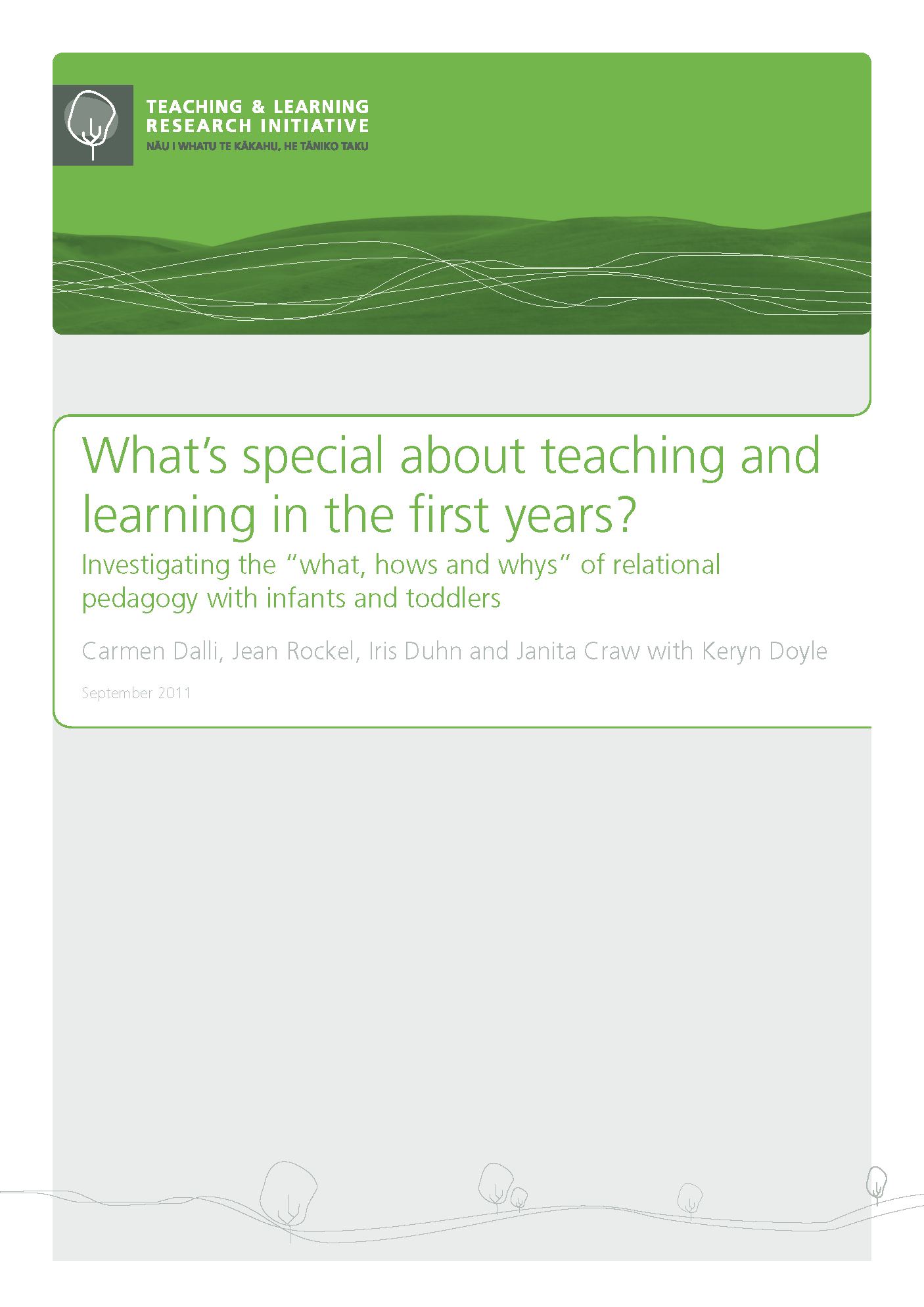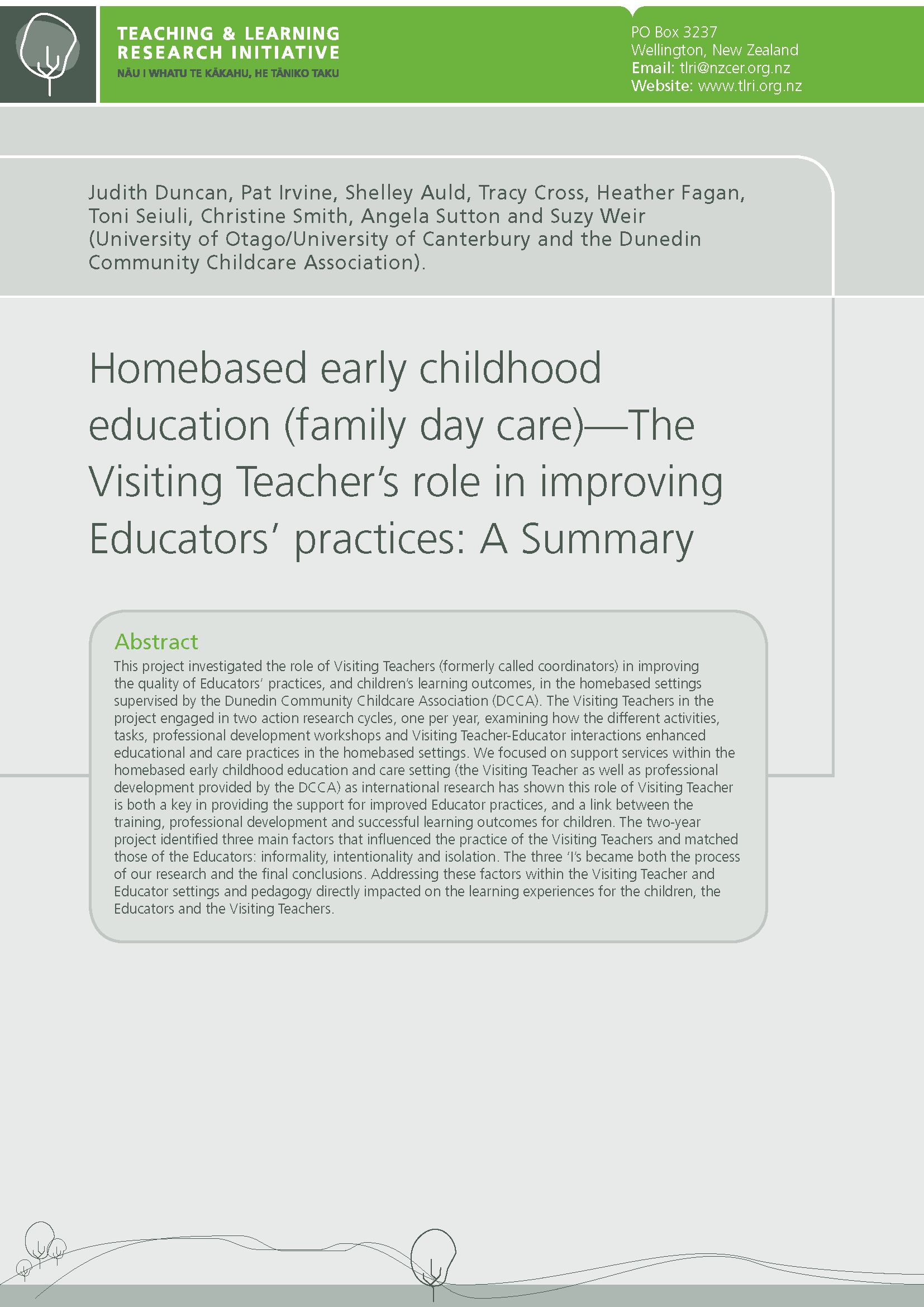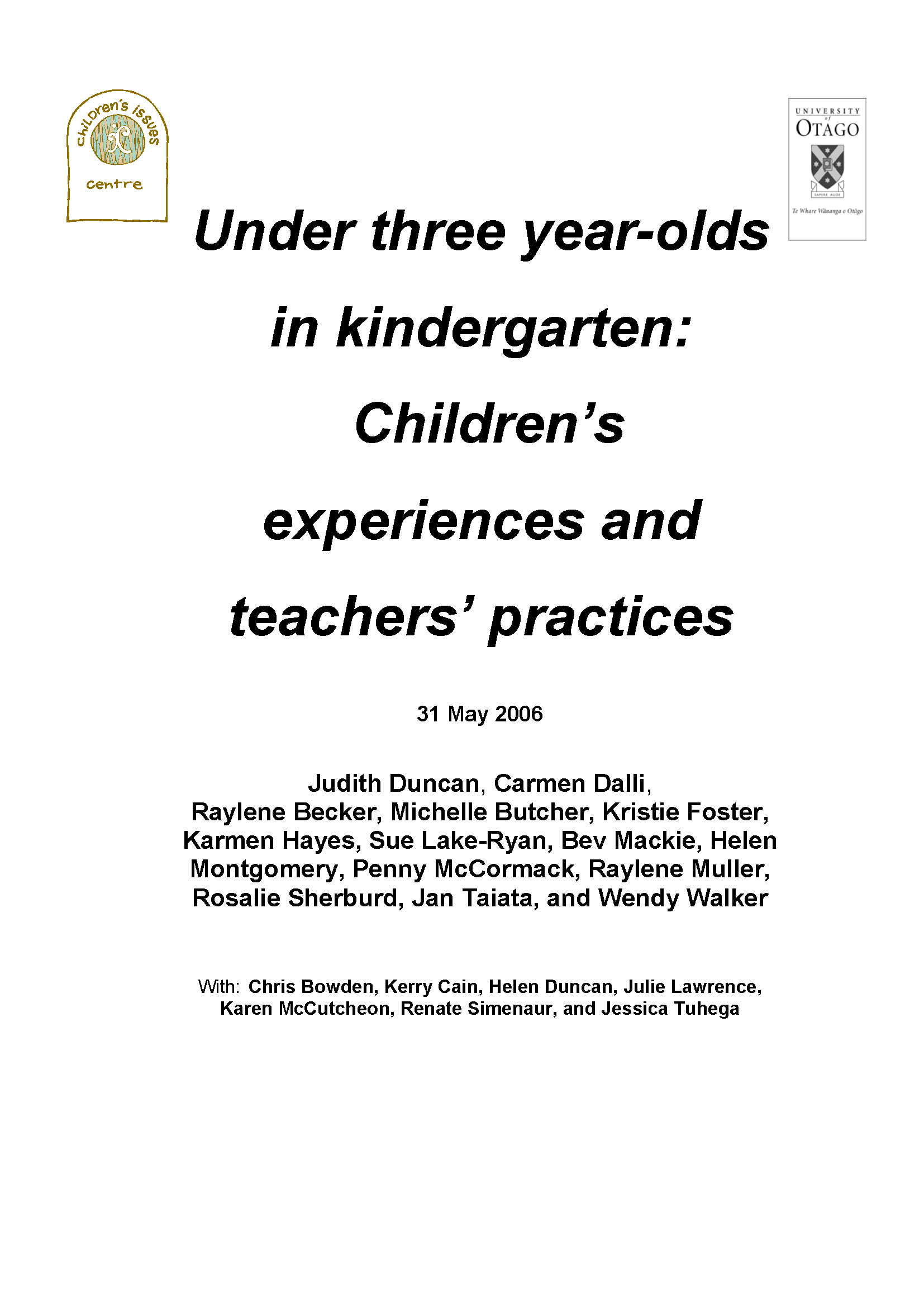
What’s special about teaching and learning in the first years? Investigating the “what, hows and whys” of relational pedagogy with infants and toddlers
Introductory statement What is special about teaching infants and toddlers? How can the “what, hows and whys” of infant toddler pedagogy[1] be articulated and enhanced to support learning? These questions were at the heart of a two-year study in which researchers teamed up with teachers in five infant and toddler centres in Auckland and Wellington to gather practice-based evidence about pedagogy as the art and science of teaching and learning in this under-researched area of early childhood education and care. Key findings The study found that theorising about children’s learning through discussions of video data enabled the teachers to “really look” at their teaching and open up taken-for-granted meanings about the



